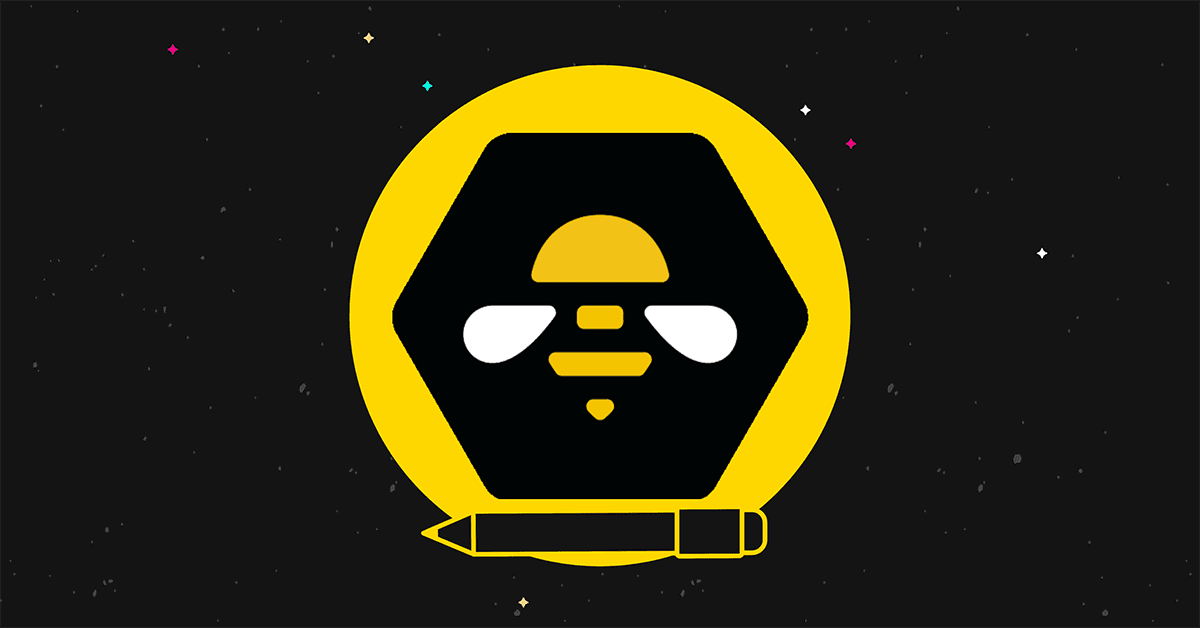In the ever-evolving landscape of social media, staying ahead means wielding the right tools. Today, we’re diving deep into a head-to-head comparison of two major players in the social media management arena: SocialBee and Loomly. Whether you’re a solopreneur, a small business owner, or part of a bustling marketing team, finding the tool that fits like a glove can make all the difference in your online presence. So, grab your favorite beverage, and let’s unravel this together in a friendly chat style. Who knows? By the end of this, you might just find your social media soulmate.
| Social Bee | Loomly |
|---|---|
 |  |
| G2 Score – 4.8 out of 5 stars | G2 Score – 4.6 out of 5 stars |
| TrustRadius Score – 8.9 out of 10 stars | TrustRadius Score – 7.4 out of 10 stars |
SocialBee vs. Loomly: A Deep Dive into User Experience (UX)
When it comes to choosing a social media management tool, the user experience (UX) stands out as a pivotal factor. After all, a tool can have all the bells and whistles, but if it’s as intuitive as a maze, what’s the point? So, let’s compare how SocialBee and Loomly stack up in terms of UX.
SocialBee: A Buzz of Simplicity
First up is SocialBee. Imagine walking into a room where everything has its place, and you can find what you need with your eyes closed. That’s SocialBee for you. It’s designed with simplicity at its core, making it a breeze for users to navigate through its features. The dashboard? Clean and uncluttered. The menus? Straightforward. Even if you’re diving into social media management for the first time, SocialBee’s interface makes you feel right at home.
Creating and scheduling posts in SocialBee feels like chatting with an old friend. It’s that easy. You have a clear view of your content calendar, and with a few clicks, you can populate it with posts for the days or weeks ahead. But the cherry on top? The categorization feature. You can organize your posts into categories, making it a cinch to maintain a balanced content mix. Want to sprinkle some promotional posts amid educational ones? SocialBee has your back.
Another aspect where SocialBee shines is its onboarding process. The team knows the value of a good first impression, so they’ve crafted a step-by-step guide that walks you through the setup. It’s like having a friendly guide by your side, ensuring you’re snug and cozy from the get-go.
Loomly: Where Creativity Meets Structure
Switching gears to Loomly, it’s like stepping into a workshop where creativity flows freely, yet everything has a structure. Loomly is praised for its intuitive design, which gently guides users through the process of crafting, scheduling, and managing social media content. The interface is sleek, modern, and feels a tad more sophisticated than SocialBee’s, which might appeal to users who prefer a touch of elegance.
Loomly’s standout feature is its post ideas and optimization tips. It’s akin to having a brainstorming buddy who’s always there to nudge you with inspiration and suggestions to enhance your posts. This can be a game-changer for those moments when you’re staring at a blank screen, wondering what to share with your audience.
Moreover, Loomly excels in its collaborative features. If you’re working in a team, you’ll appreciate the workflow where members can comment, approve, or request changes to posts. It fosters a collaborative environment that’s essential for teams looking to streamline their social media efforts.
When it comes to onboarding, Loomly matches SocialBee’s enthusiasm for welcoming new users. With a comprehensive guide and prompts that lead you through each step, setting up your account feels less like a chore and more like setting the stage for your brand’s online journey.
The Verdict on UX
Choosing between SocialBee and Loomly for their UX boils down to personal preference and your specific needs. If simplicity and ease of use are your top priorities, SocialBee might just win your heart. On the other hand, if you’re after a tool that marries creativity with collaboration, Loomly could be your match.
Content Creation and Scheduling: The Heart of Social Media Strategy
SocialBee: Efficiency Meets Ingenuity
SocialBee doesn’t just stop at offering an intuitive user interface; it extends its simplicity and efficiency into the realm of content creation and scheduling. One of the tool’s standout features is its ability to let users create content once and then schedule it to be recycled over time. This is particularly beneficial for evergreen content that remains relevant, reducing the need to constantly generate new posts.
The platform supports a wide array of content types, from basic text updates and links to images and videos, ensuring your social feeds can be as diverse and engaging as your audience demands. SocialBee’s categorization feature comes back into play here, allowing for a strategic approach to content planning. By assigning posts to different categories and setting up a schedule for each category, users can maintain a well-balanced content mix with minimal fuss.
Furthermore, SocialBee offers a content curation feature, which is a boon for those days when inspiration is hard to come by. By suggesting articles and content from various sources, it helps keep your feed fresh and engaging without the constant need for original content.
Loomly: Sparking Creativity and Collaboration
Loomly takes content creation and scheduling a step further by incorporating tools designed to spark creativity and facilitate collaboration. The platform provides users with post ideas based on trending topics, holidays, and more, making it easier to come up with relevant and timely content. This feature is especially valuable for keeping your social media strategy aligned with what’s current and engaging for your audience.
In addition to supporting a variety of content types, Loomly offers advanced features for customizing posts for each social media platform. This ensures that your content is optimized whether it’s going on Facebook, Twitter, Instagram, or LinkedIn. The built-in photo and video editing tools allow for last-minute tweaks, ensuring your posts are picture-perfect before going live.
Collaboration is where Loomly truly shines. The platform’s workflow facilitates teamwork by allowing members to draft, review, and comment on posts before they’re scheduled. This collaborative approach not only streamlines the content creation process but also ensures that every piece of content is polished and approved by relevant team members before hitting the social feeds.
Bringing It All Together
Both SocialBee and Loomly offer robust features for content creation and scheduling, each with its own set of strengths. SocialBee focuses on efficiency and the strategic recycling of evergreen content, making it a strong contender for those looking to maximize their content’s lifespan. On the other hand, Loomly emphasizes creativity, timeliness, and team collaboration, appealing to users who value fresh, optimized content and a seamless team workflow.
Each tool has carved out a niche that caters to different aspects of social media management, highlighting the importance of aligning your choice with your specific needs and working style.

Related: Check out our free SEO suite

Analytics and Reporting: Measuring Success in the Social Sphere
SocialBee: Insights to Buzz About
SocialBee takes a straightforward approach to analytics, offering users clear and concise reports on their social media performance. The platform focuses on delivering essential metrics such as engagement rates, follower growth, and post reach. These metrics are crucial for understanding how your content resonates with your audience and which strategies are driving results.
One of the strengths of SocialBee’s analytics is its simplicity. The platform presents data in an easily digestible format, making it accessible even to those who might not be data experts. This user-friendly approach ensures that you can quickly glean insights and make informed decisions about your social media strategy without getting bogged down in overly complex data analysis.
Additionally, SocialBee allows for the tracking of link clicks, a feature particularly useful for campaigns focused on driving traffic to a website. By integrating with URL shorteners like Bitly, it provides a straightforward way to measure click-through rates, helping you gauge the effectiveness of your calls-to-action.
Loomly: A Comprehensive View of Performance
Loomly offers a more comprehensive suite of analytics tools compared to SocialBee, catering to users who crave deeper insights into their social media performance. The platform provides detailed analytics on a wide range of metrics, including engagement, reach, impressions, and more, across all connected social media accounts.
A standout feature of Loomly’s analytics is its ability to compare performance across different platforms. This cross-platform analysis is invaluable for understanding where your content performs best and where there might be room for improvement. It allows for a nuanced understanding of your social media strategy’s effectiveness, enabling more targeted adjustments to maximize impact.
Loomly also excels in presenting historical data, allowing users to track their performance over time. This long-term view is essential for identifying trends, understanding seasonal variations in engagement, and assessing the overall growth of your social media presence.
Moreover, Loomly’s analytics extend to ad performance, offering insights into the effectiveness of paid campaigns. For businesses investing in social media advertising, this feature provides a clear picture of ROI, helping to refine ad strategies for better results.
The Insightful Takeaway
Both SocialBee and Loomly offer valuable analytics capabilities, each with its own focus and strengths. SocialBee’s approach caters to users looking for straightforward, essential insights to quickly assess and tweak their strategies. Its simplicity is its strength, particularly for smaller teams or those new to social media analytics.
On the other hand, Loomly serves users seeking more comprehensive analytics, including detailed performance comparisons across platforms and in-depth ad performance analysis. Its robust reporting tools are well-suited for larger teams or those with a more data-driven approach to social media management.
In the realm of analytics and reporting, your choice between SocialBee and Loomly may hinge on the depth of insights you need and how you prefer to interact with data.
Pricing
| Social Bee | Bootstrap Plan: Starting at $19 per month for 1 workspace and 5 social profiles. Accelerate Plan: At $39 per month, offering 1 workspace and 10 social profiles, plus additional content categories. Pro Plan: Starting at $79 per month for 1 workspace and 25 social profiles, along with priority support. |
| Loomly | Base Plan: Starting at $26 per month (billed annually) for 2 users and 10 social accounts, including basic analytics and post scheduling. Standard Plan: At $59 per month (billed annually), offering 6 users and 20 social accounts, with advanced analytics and custom workflows. Advanced Plan: Starting at $129 per month (billed annually), with 16 users and 35 social accounts, plus more advanced features. Premium Plan: At $269 per month (billed annually), for 26 users and 50 social accounts, including all features and priority support. |
Integration Capabilities: Expanding Your Social Media Toolkit
SocialBee: Streamlining Workflows with Strategic Integrations
SocialBee doesn’t just operate in isolation; it recognizes the importance of fitting into a broader ecosystem of digital marketing tools. With that in mind, SocialBee offers integrations with several key platforms and services that enhance its utility beyond just social media scheduling.
A notable integration is with Canva, the popular graphic design tool. This partnership allows users to create visually engaging content directly within the SocialBee interface, streamlining the process of going from content creation to publication. Additionally, integrations with URL shorteners like Bitly not only facilitate efficient link management but also enable detailed click tracking, offering deeper insights into audience engagement.
SocialBee also connects with Zapier, opening the door to thousands of potential integrations with apps across various categories, from email marketing platforms like Mailchimp to CRM systems such as Salesforce. This flexibility means SocialBee can easily become a cog in a much larger marketing machine, automating workflows and data exchange between different tools and services.
Loomly: Broadening Horizons with Comprehensive Integrations
Loomly, understanding the interconnected nature of digital marketing, offers a wide array of integrations that empower users to manage their social media in concert with other tools and platforms. Its integration suite is designed to cover various aspects of digital marketing, from content creation to analytics and advertising.
Like SocialBee, Loomly integrates with Canva, providing users with a seamless content creation experience that blends creativity with efficiency. This feature is particularly valuable for teams that rely on visual content to stand out in crowded social feeds.
Loomly goes a step further by offering native integrations with major social media advertising platforms, including Facebook Ads and Instagram Ads. This direct connection simplifies the process of creating, managing, and measuring the performance of social media ad campaigns, all within the Loomly interface. For businesses that leverage social media advertising, this integration can be a game-changer, offering a streamlined workflow and centralized control over both organic and paid content.
Additionally, Loomly’s integration with Google Analytics enhances the ability to track the effectiveness of social media efforts in driving website traffic and conversions. By linking social media performance with web analytics, users gain a holistic view of their online marketing performance, enabling more informed strategic decisions.
Bridging Tools and Teams
In the realm of integrations, both SocialBee and Loomly showcase strong capabilities, each with a focus on making social media management as integrated and efficient as possible. SocialBee shines with its Zapier integration, offering unmatched flexibility to connect with a vast array of tools and automate workflows. Loomly, on the other hand, emphasizes direct integrations with content creation, advertising, and analytics platforms, providing a more streamlined and focused approach to managing social media alongside other digital marketing efforts.
The choice between SocialBee and Loomly in terms of integration capabilities depends largely on your specific needs. If you’re looking for a tool that can easily connect and automate a wide range of tasks across different platforms, SocialBee’s Zapier integration might be particularly appealing. Conversely, if your focus is on a seamless workflow for content creation, social media advertising, and performance analysis, Loomly’s direct integrations could offer the streamlined experience you’re after.
Customer Support and Community: Ensuring You’re Never Left in the Dark
SocialBee: Personalized Support with a Buzz
SocialBee takes customer support seriously, offering multiple channels for users to get the help they need. Whether it’s through live chat, email support, or their comprehensive knowledge base, users can expect timely and helpful responses to their inquiries. What sets SocialBee apart is the personal touch they bring to their support. The team is known for being not just responsive but also genuinely caring about their users’ success, providing detailed, personalized advice that goes beyond generic responses.
In addition to direct support, SocialBee fosters a community through various online platforms, including social media groups and forums where users can share tips, ask questions, and learn from each other. This sense of community is invaluable, especially for small businesses and solopreneurs who might not have a large network of peers to lean on for advice and support in their social media efforts.
Loomly: Comprehensive Support Backed by a Growing Community
Loomly matches its competitor with a robust support system, offering live chat, email support, and a detailed FAQ section that covers a wide range of topics. The Loomly team prides itself on its quick response times and the quality of support provided, ensuring that users can resolve their issues and get back to their social media campaigns with minimal downtime.
Beyond direct support, Loomly is building a vibrant community of digital marketers, social media managers, and business owners. Through their blog, social media channels, and webinars, Loomly encourages engagement and learning, covering not just the ins and outs of using Loomly but also broader topics in social media marketing. This approach helps users not only get the most out of Loomly but also stay ahead of the curve in their overall social media strategy.
The Importance of Being Supported
The approach to customer support and community building by both SocialBee and Loomly underscores their understanding of the challenges faced by social media managers. With both platforms, you’re not just getting a tool; you’re getting a support system designed to help you succeed. SocialBee shines with its personalized support and nurturing of a close-knit community, making it an excellent choice for those who value a more intimate user experience. Loomly, with its quick, comprehensive support and efforts to educate and engage through content and webinars, is ideal for users who appreciate a wealth of learning resources and a broad community base.
While both platforms excel in providing user support, the choice between them might come down to the type of support experience you prefer and the value you place on community engagement and educational resources.
Exploring these social media management tools from various angles highlights that the choice between SocialBee and Loomly is not about finding the ‘best’ tool in absolute terms but rather the best tool for your specific needs, preferences, and business goals.
Conclusion:
There’s no one-size-fits-all answer when it comes to choosing the best social media management tool. Both SocialBee and Loomly offer unique advantages that cater to different types of users and needs. By carefully considering your specific requirements, team dynamics, and the aspects of social media management most critical to your success, you can select a tool that not only fits your workflow but also enhances your social media strategy, driving engagement and growth.
Remember, the right tool is the one that aligns with your goals, simplifies your processes, and helps you achieve measurable success on social media. Whether you choose SocialBee or Loomly, the key is to leverage the strengths of the platform to maximize your social media potential.





















Comments are closed.